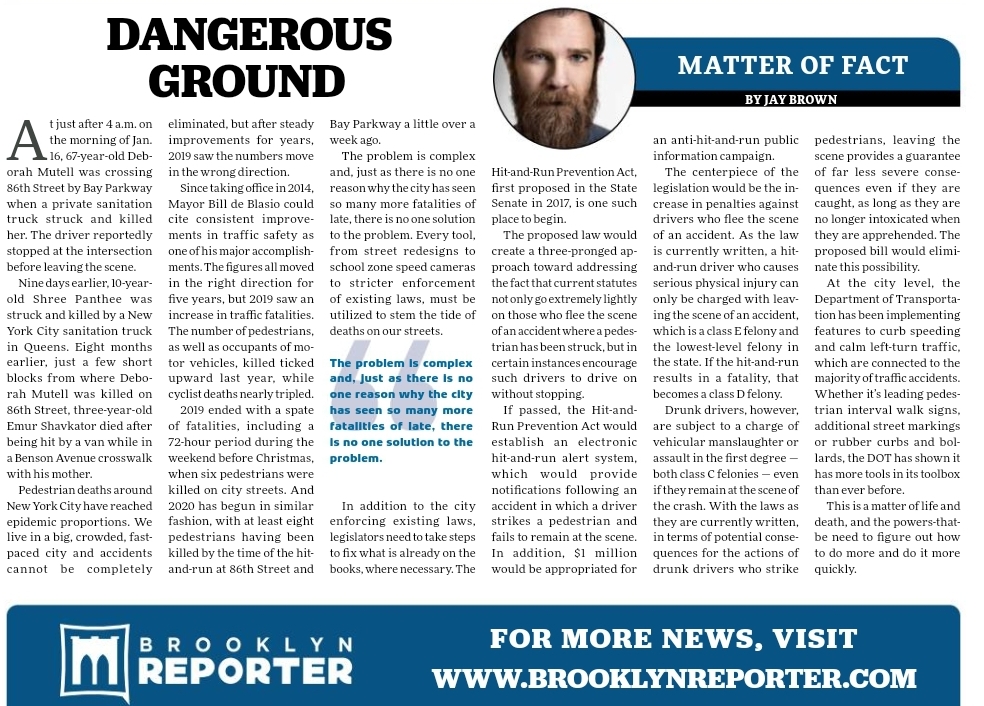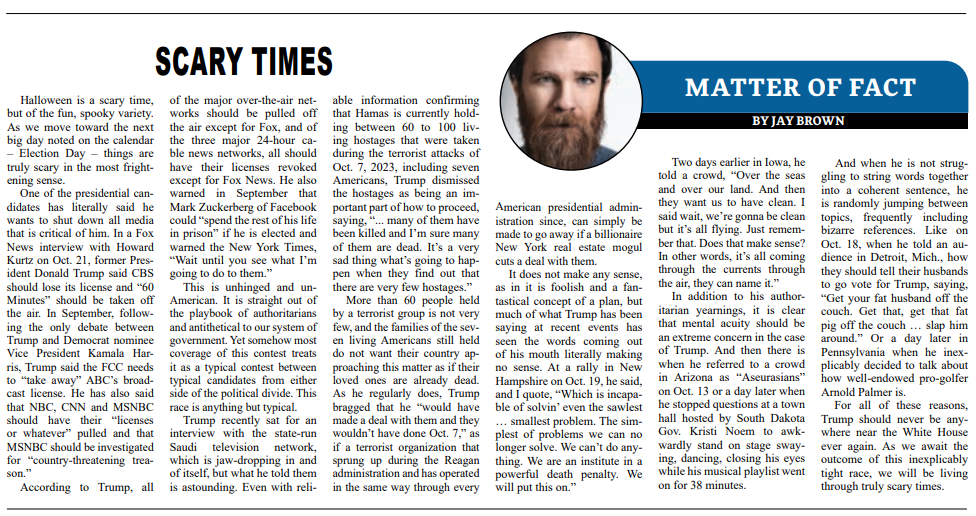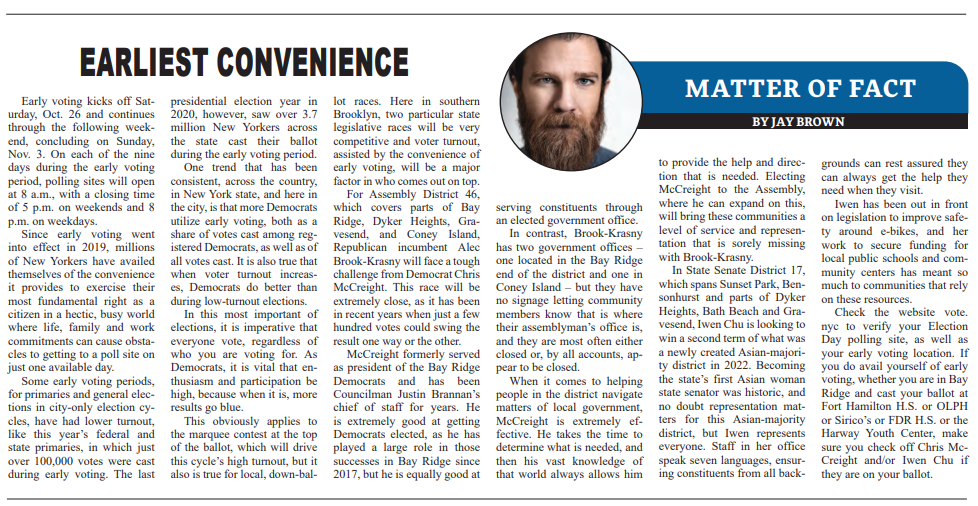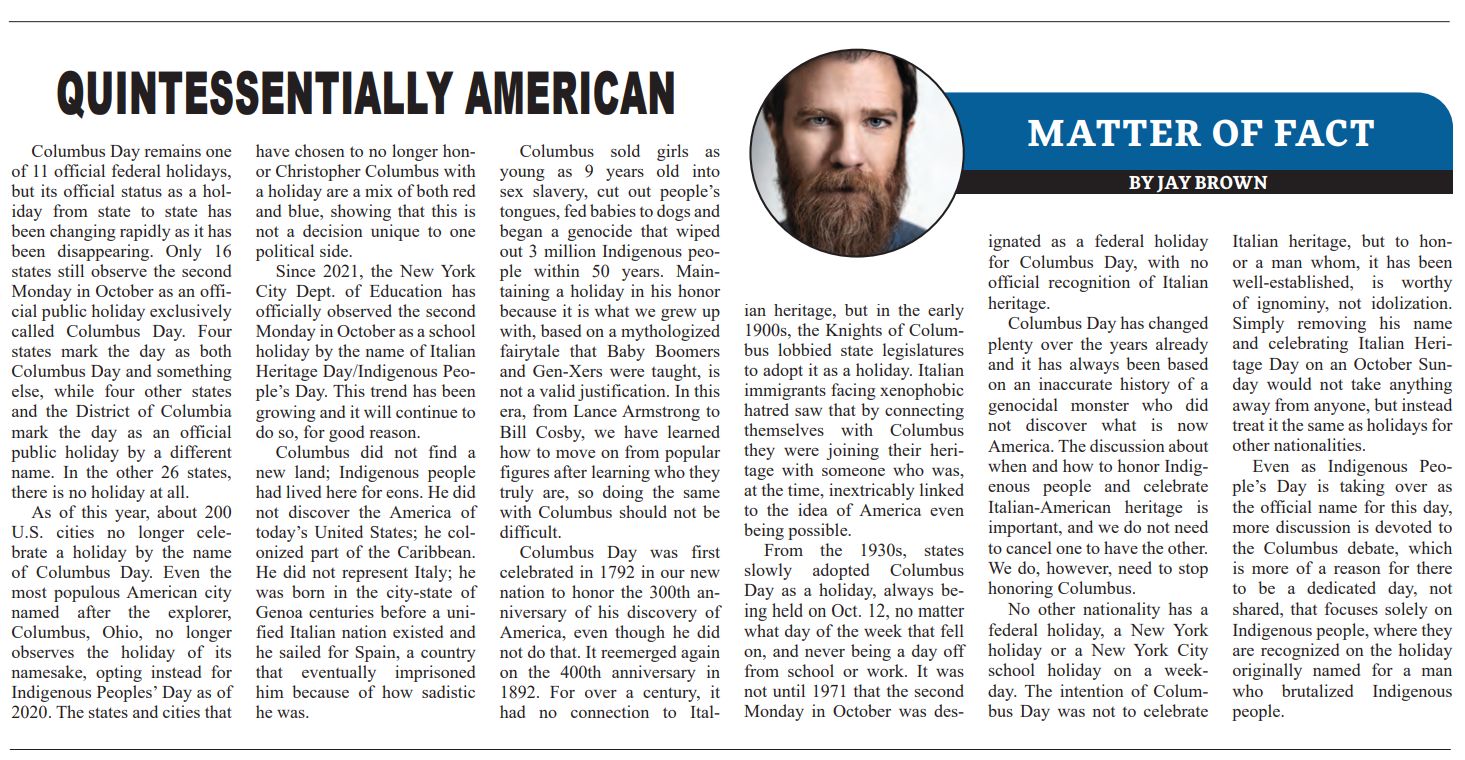This column, from the weekly opinion piece MATTER OF FACT, first appeared in the Home Reporter and Spectator dated January 24, 2020
At just after 4 a.m. on the morning of Jan. 16, 67-year-old Deborah Mutell was crossing 86th Street by Bay Parkway when a private sanitation truck struck and killed her. The driver reportedly stopped at the intersection before leaving the scene.
Nine days earlier, 10-year-old Shree Panthee was struck and killed by a New York City sanitation truck in Queens. Eight months earlier, just a few short blocks from where Deborah Mutell was killed on 86th Street, 3-year-old Emur Shavkator died after being hit by a van while in a Benson Ave crosswalk with his mother.
Pedestrian deaths around New York City have reached epidemic proportions. We live in a big, crowded, fast-paced city and accidents cannot be completely eliminated, but after steady improvements for years, 2019 saw the numbers move in the wrong direction.
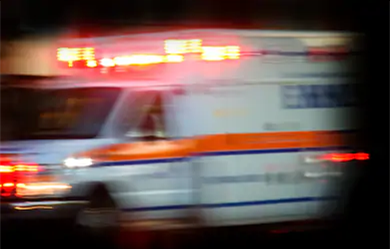
Since taking office in 2014, Mayor Bill de Blasio could cite consistent improvements in traffic safety as one of his major accomplishments. The figures all moved in the right direction for five years, but 2019 saw an increase in traffic fatalities. The number of pedestrians, as well as occupants of motor vehicles, killed ticked upward last year, while cyclist deaths nearly tripled.
2019 ended with a spate of fatalities, including a 72 hour period during the weekend before Christmas, when 6 pedestrians were killed on city streets. And 2020 has begun in similar fashion, with at least eight pedestrians having been killed at the time of the hit-and-run at 86th Street and Bay Parkway a little over a week ago.
The problem is complex and, just as there is no one reason why the city has seen so many more fatalities of late, there is no one solution to the problem. Every tool, from street redesigns to school zone speed cameras to stricter enforcement of existing laws, must be utilized to stem the tide of deaths on our streets.
The problem is complex and, just as there is no one reason for why the city has seen so many more fatalities of late, there is no one solution to the problem.
In addition to the city enforcing existing laws, legislators need to take steps to fix what is already on the books, where necessary. The Hit-and-Run Prevention Act, first proposed in the State Senate in 2017, is one such place to begin.
The proposed law would create a three-pronged approach toward addressing the fact that current statutes not only go extremely lightly on those who flee the scene of an accident where a pedestrian has been struck, but in certain instances encourage such drivers to drive on without stopping.
If passed, the Hit-and-Run Prevention Act would establish an electronic hit-and-run alert system, which would provide notifications following an accident in which a driver strikes a pedestrian and fails to remain at the scene. In addition, $1 million would be appropriated for an anti-hit-and-run public information campaign.
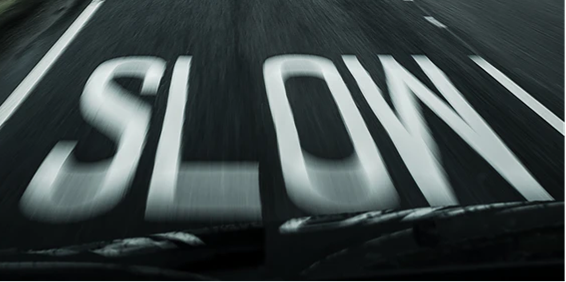
The centerpiece of the legislation would be the increase in penalties against drivers who flee the scene of an accident. As the law is currently written, a hit-and-run driver who causes serious physical injury can only be charged with leaving the scene of an accident, which is a class E felony and the lowest-level felony in the state. If the hit-and-run results in a fatality, that becomes a class D felony.
Drunk drivers, however, are subject to a charge of Vehicular Manslaughter or Assault in the First Degree — both class C felonies — even if they remain at the scene of the crash. With the laws as they are currently written, in terms of potential consequences for the actions of drunk drivers who strike pedestrians, leaving the scene provides a guarantee of far less severe consequences even if they are caught, as long as they are no longer intoxicated when they are apprehended. The proposed bill would eliminate this possibility.
At the city level, the Department of Transportation has been implementing features to curb speeding and calm left-turn traffic, which are connected to the majority of traffic accidents. Whether it’s leading pedestrian interval walk signs, additional street markings or rubber curbs and bollards, the DOT has shown it has more tools in its toolbox than ever before.
This is a matter of life and death, and the powers-that-be need to figure out how to do more and do it more quickly.

